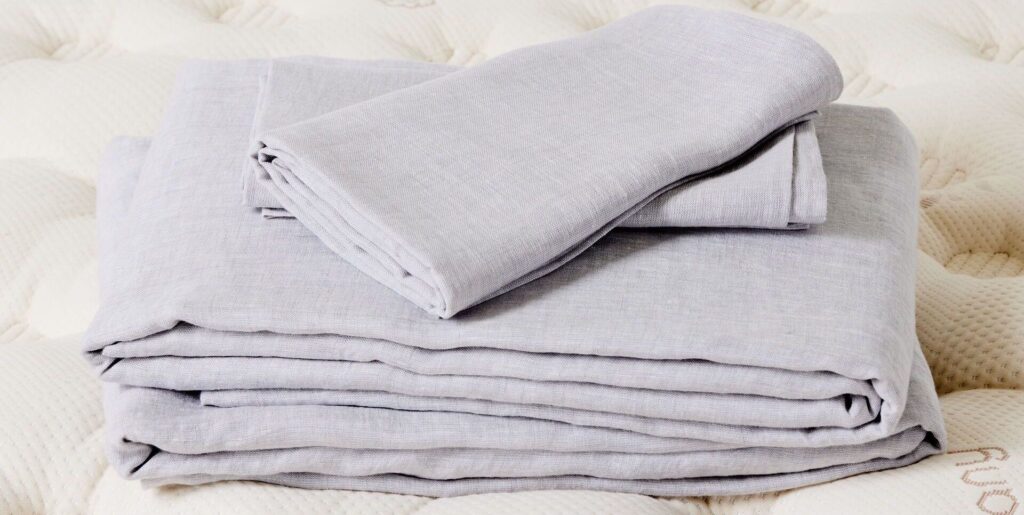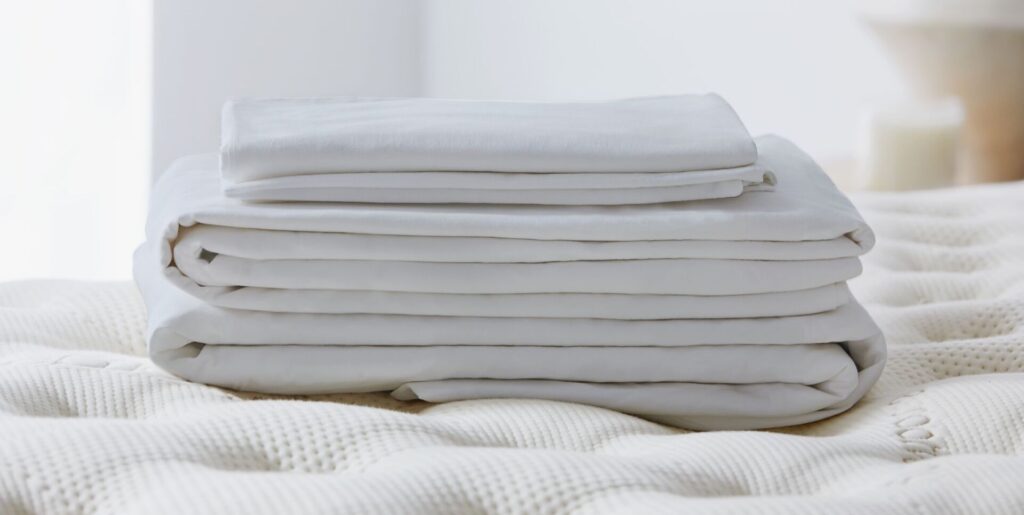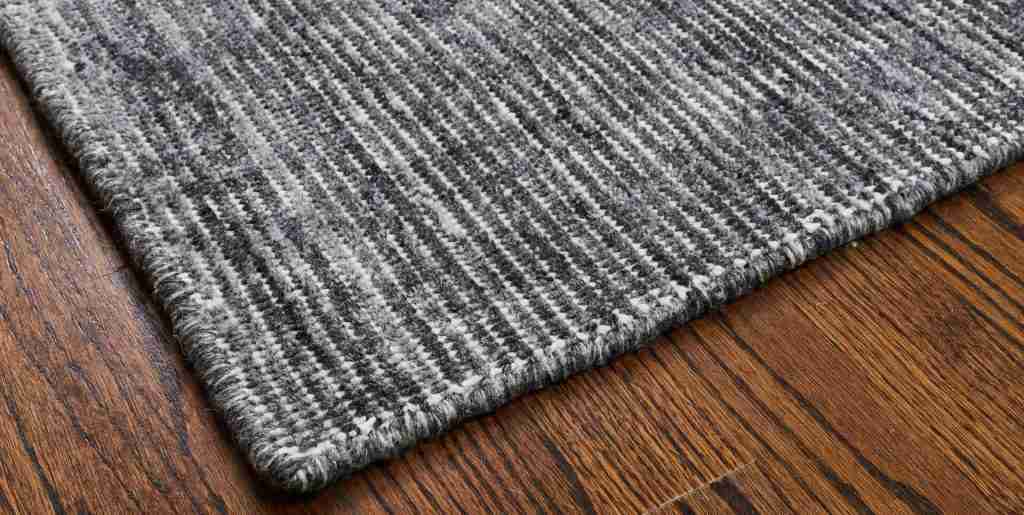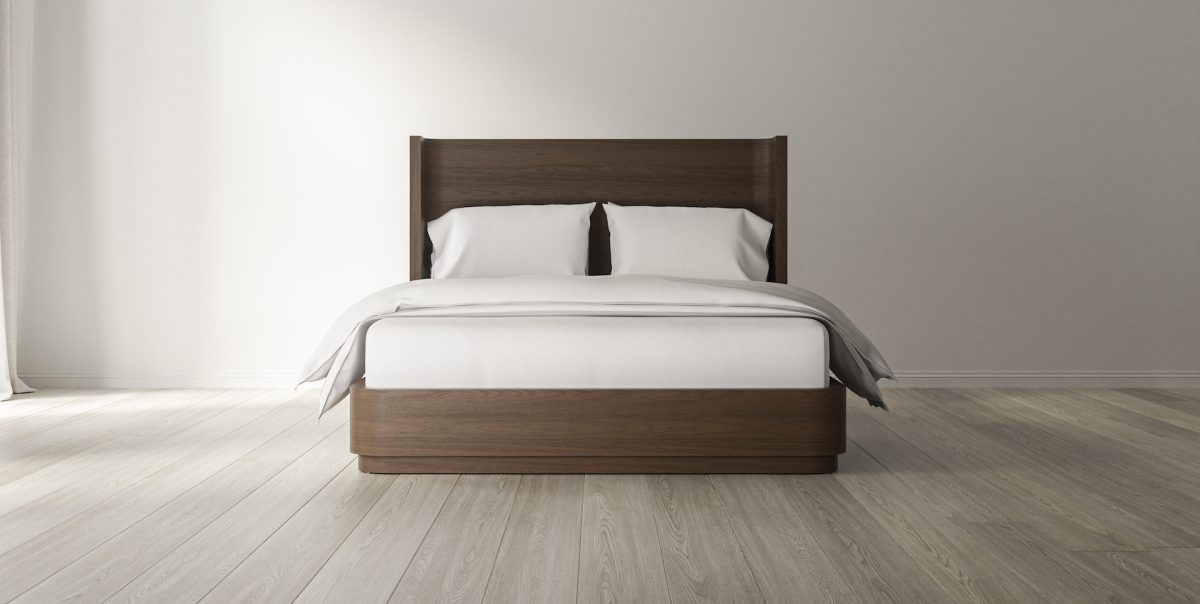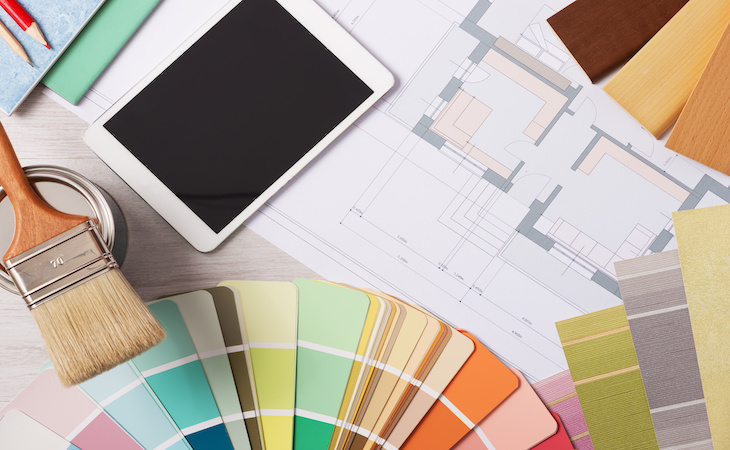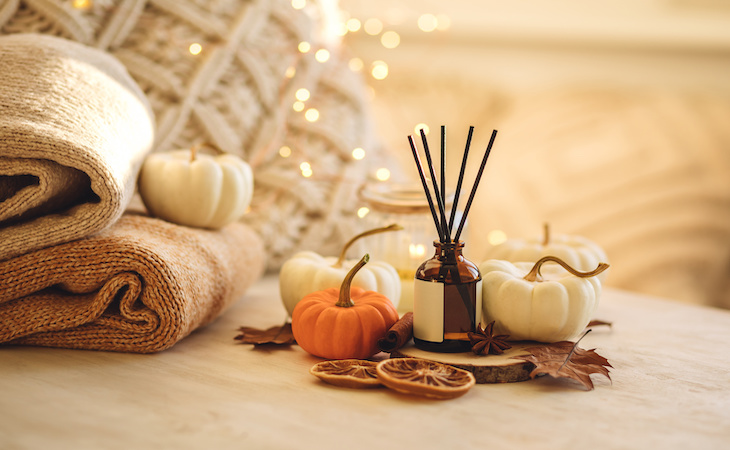
Bedroom Style, Bedroom Styling Guides
November 25, 2025
How to Use Interior Design Psychology in Your Bedroom
Written by Shelby Deering
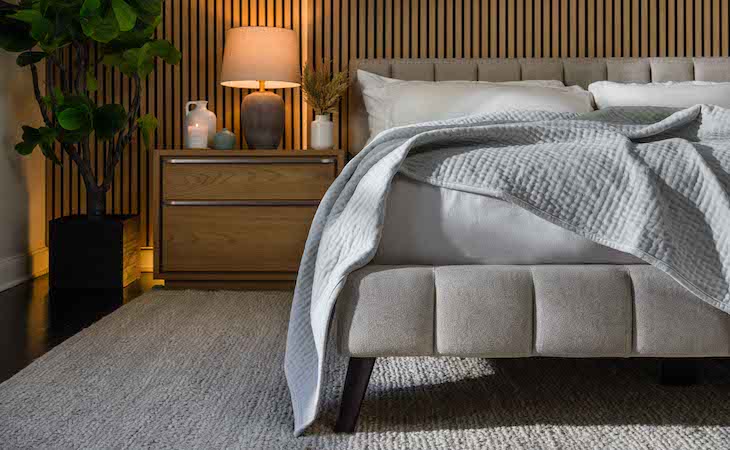
Design choices in your bedroom directly influence sleep quality and mood. Colors like greens and blues promote relaxation, while warm tones bring comfort. Natural light boosts energy, and dim evening lighting supports rest. Clutter-free layouts enhance calm, and soft, natural textures foster comfort and security, creating a soothing sleep environment.
Although it may not seem like it, the way you design your bedroom can have a big impact on your sleep.
Sure, it’s where you turn the lights out at the end of a long day and shut your eyes, but your surroundings indeed matter when it comes to your sleep quality. In fact, there’s real psychology behind interior design to help you create a sleep space where you feel soothed and calmed before going to bed.
Ahead, we’ll explore the connection between interior design and psychology—and you’ll discover how to use these principles to build the dreamiest bedroom.
What is interior design psychology?
“Interior design psychology is about how the inside of a space—like your home, office, or school—affects how you feel and behave,” says Klarissa Castro, PsyD, design therapist at Design Shrink Studios. “It looks at things like layout, color, lighting, and textures to make rooms not just beautiful but also comfortable, safe, and emotionally supportive.”
For example, warm, earthy colors, can be used in a therapy office to help people feel calm and grounded.
“Design psychology is the bigger picture—it studies how any kind of design, from buildings to parks to even apps, impacts our thoughts, feelings, and behaviors,” adds Castro. “It combines psychology, architecture, and sensory design to make environments—physical or digital—more positive and user-friendly.”
Key elements of interior design affecting psychology
Color
Color influences how we feel and behave often without us even realizing it, notes Castro.
“Warm tones like soft peach or beige create a sense of comfort and intimacy, while cool tones like blues and greens promote relaxation and reduce stress,” she says. “Neutral tones bring stability and timelessness.”
As you turn to color psychology in interior design within your bedroom, Castro recommends painting your walls in calming shades, like sage green, to ease anxiety. Additionally, using lighter colors for your walls can make the room feel more open, while darker bedding can create a cozy feel.
Lighting
“Light affects our mood, energy, and sleep,” says Castro. “It tells our bodies when to be alert and when to wind down.” Natural light in the morning helps boost energy, while warm, dim light in the evening helps you relax, she explains. Meanwhile, harsh, bright lighting can cause stress or make it hard to unwind, adds Castro.
For lighting in your bedroom that will create a positive psychological reaction, Castro suggests installing dimmable lights so you can adjust brightness throughout the day and using a warm bedside lamp (around 2700K) for evening reading.
Furniture and layout
According to Castro, the way furniture is arranged impacts comfort, flow, and even feelings of safety. “An open, clutter-free layout helps you feel calm,” she notes.
For a psychologically-informed bedroom layout, place your bed so you can see the door without being in line with it (this is called the “command position”), advises Castro.
This can help facilitate a feeling of security. Additionally, try to keep furniture minimal and functional to avoid clutter, says Castro.
Texture and material
“How things feel to the touch—soft, rough, smooth—can trigger feelings of comfort, luxury, or connection to nature,” says Castro. “Soft fabrics and natural materials tend to make a room feel more inviting and soothing.”
To capture this feel in your bedroom, you can layer bedding with breathable fabrics like linen or cotton, add a plush rug for softness underfoot, or choose furniture made of wood or rattan to bring in a natural, grounding element, says Castro.
FAQs
How is psychology used in interior design?
The psychology of interior design is used to shape spaces that don’t just look good but also feel good and support your mental, emotional, and physical well-being, says Castro.
“Designers use insights from environmental psychology, neuroscience, and behavioral science to make intentional choices about color, light, layout, materials, and sensory elements so the space works with—not against—the way people think, feel, and behave,” she says.
What is the 60/40 rule in interior design?
It’s the rule that interior design pros use when they’re looking to achieve harmony and balance in a space. Here’s how Castro describes it:
- 60% is familiar, safe, and grounding. This is your baseline of stability—the elements that keep you tethered while change happens around you. Think of your most comfortable seating, a core color palette you already like, functional layouts you know work, and a few sentimental items that remind you of who you are at your core.
- 40% is novel, energizing, and identity-shaping. This is the intentional push—the design choices that challenge your habits and perceptions. It’s more than a splash of color; it’s shifting a room’s focal point, bringing in bolder patterns, mixing in furniture styles you’ve never tried, or adding sensory elements that change the energy of the space. These elements are meant to spark movement, new perspectives, and even a little discomfort—because that’s where growth happens.
Shelby Deering
Shelby Deering is a Madison, Wisconsin-based freelance lifestyle writer contributing home design and health articles to national publications. When she’s not writing, you’ll find her hiking, running, or walking with her husband and corgi, Dolly.
